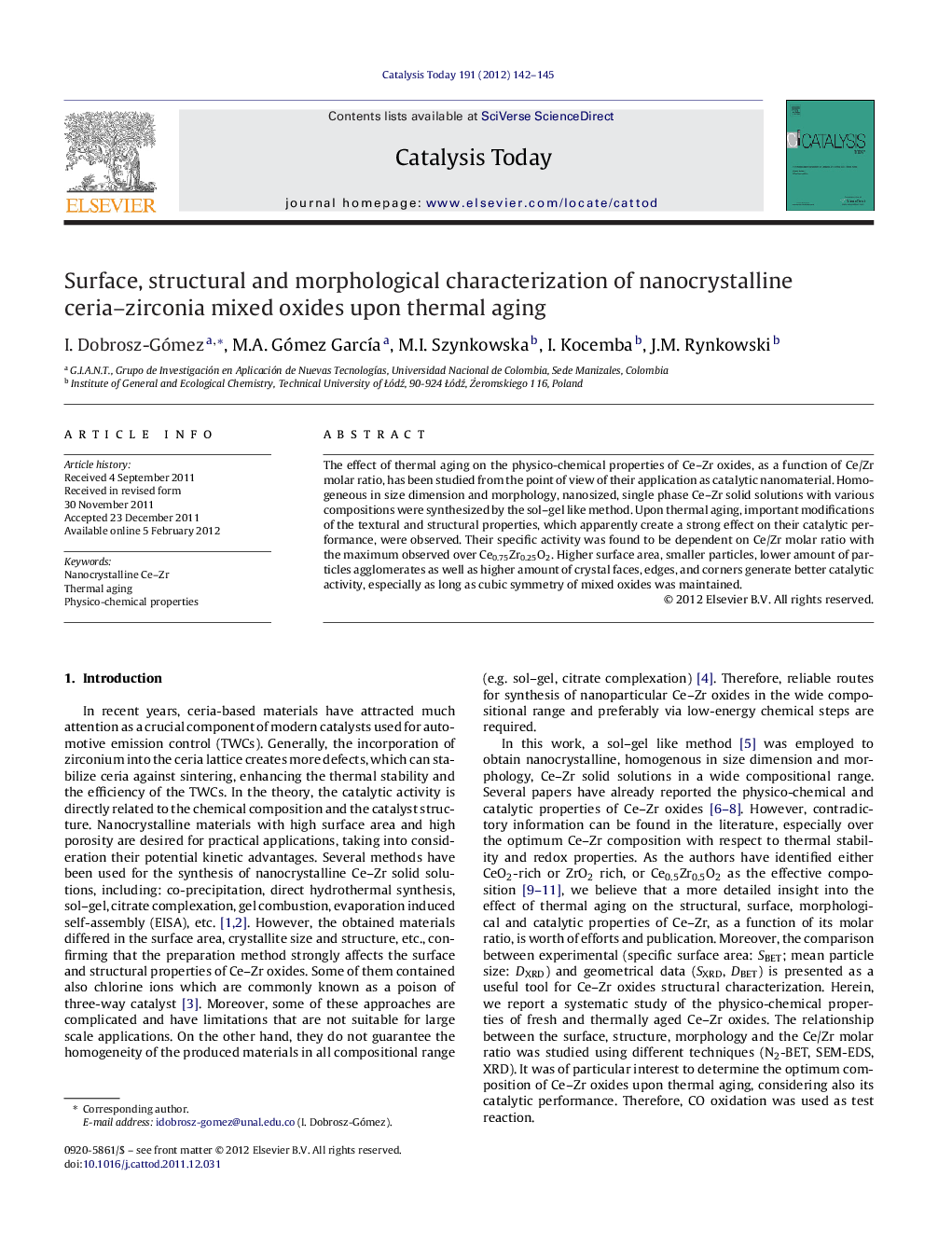| Article ID | Journal | Published Year | Pages | File Type |
|---|---|---|---|---|
| 55293 | Catalysis Today | 2012 | 4 Pages |
The effect of thermal aging on the physico-chemical properties of Ce–Zr oxides, as a function of Ce/Zr molar ratio, has been studied from the point of view of their application as catalytic nanomaterial. Homogeneous in size dimension and morphology, nanosized, single phase Ce–Zr solid solutions with various compositions were synthesized by the sol–gel like method. Upon thermal aging, important modifications of the textural and structural properties, which apparently create a strong effect on their catalytic performance, were observed. Their specific activity was found to be dependent on Ce/Zr molar ratio with the maximum observed over Ce0.75Zr0.25O2. Higher surface area, smaller particles, lower amount of particles agglomerates as well as higher amount of crystal faces, edges, and corners generate better catalytic activity, especially as long as cubic symmetry of mixed oxides was maintained.
Graphical abstractObtained by the sol–gel like method nanosized Ce1−xZrxO2 oxides are homogeneous in size dimension and morphology. The formed solid solutions are stable upon thermal aging in the whole composition range (a). Optimum physico-chemical characteristic and catalytic performance shows Ce0.75Zr0.25O2 oxide (b).Figure optionsDownload full-size imageDownload high-quality image (185 K)Download as PowerPoint slideHighlights► Homogeneous and nanosized CeO2–ZrO2 were synthesized by the sol–gel like method. ► The effect of thermal aging on their physico-chemical properties has been studied. ► Solid solutions stable upon thermal aging were formed in the whole composition range. ► Ce0.75Zr0.25O2 presented the lowest sintering effects and highest specific activity. ► Presence of crystal faces, edges and corners generates better catalytic activity.
